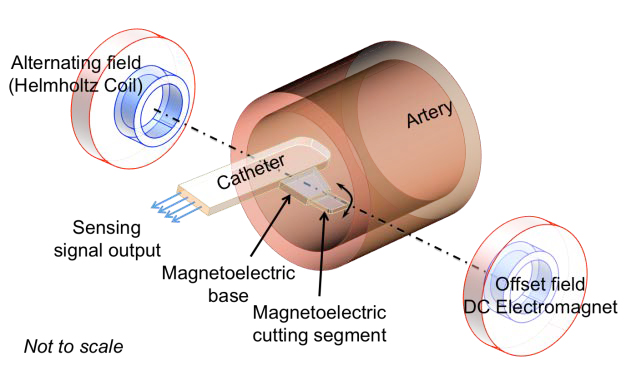Biomedical, Engineering and physical science
Magnetoelectric Device for Minimally Invasive Surgery
Technology summary
Minimally invasive techniques are often employed to perform surgical procedures involving micro cutting or ablation. Many of the tools used in these techniques rely on a surgeon’s ability to manually operate the tools at the injury site. Devices made from currently available smart materials such as piezoelectrics are less than ideal due to the high voltages required for operation and the lack of feedback. This requires the surgeon to perform minimally invasive procedures without haptic feedback and leads to safety issues such as internal bleeding resulting from nicking of tissue. Surgical tools made from self-sensing smart materials would provide increased safety in minimally invasive procedures and make surgical treatment accessible.
VCU researchers have developed a new device for minimally invasive surgery with applications in micro cutting procedures like plaque removal from arteries or tissue ablation. The technology consists of a small magnetoelectric cantilever that serves as a scraping tool, which can be fixed to the end of a catheter and inserted into the body. The “up and down” scraping action is produced by the magnetic field around the magnetoelectric material. Additionally, a closed loop mechanism allows the surgeon to adjust the frequency of the scraping action or receive tactile feedback from a remote location. Finally, an additional magnetoelectric segment provides damping of undesirable vibrations and subsequent stabilization of the fixed end of the scraping tool. These features result in a safe cutting tool that may be utilized in minimally invasive surgery.

A conceptual illustration of the magnetoelectric device as a surgical catheter removing plaque from an artery.
“Characterization of Magnetoelectric Cantilever for Use as an Ablation Tool in Minimally Invasive Surgery” by V. Sundaresan and J. Atulasimha.
